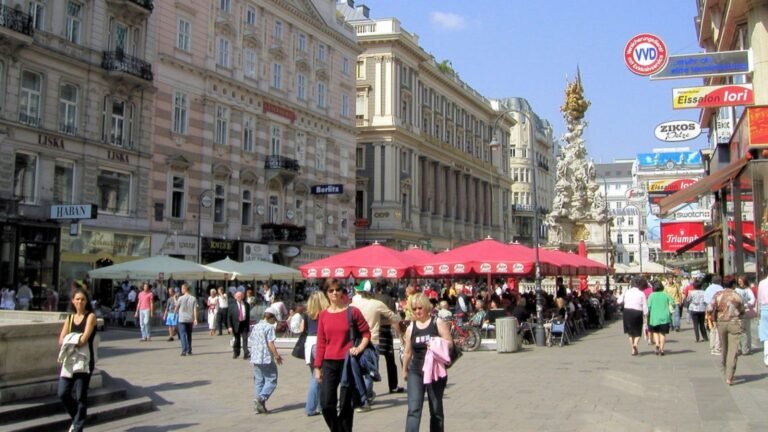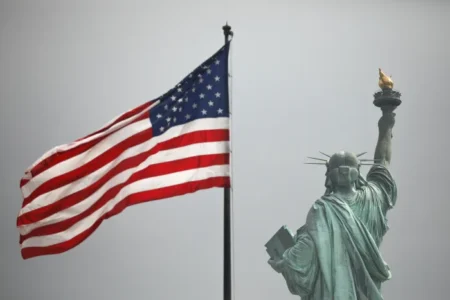Vienna is updating its tourism strategy to focus on “Good Growth.” The Vienna Tourist Board announced its new plan, called “Optimum Tourism,” to make travel better for both locals and visitors. The city aims to balance growth with sustainability and quality of life. This updated Visitor Economy Strategy (VES) includes stronger rules, better planning, and partnerships with global organizations like UN Tourism. It builds on the success of the original 2019 strategy, which helped Vienna stay strong even during the pandemic.
Vienna’s Tourism Strategy Focuses on People and Quality
The new tourism approach is guided by a simple idea: protect what makes Vienna special. The city wants tourism to create value, not problems. According to Norbert Kettner, CEO of the Vienna Tourist Board, “We want growth that improves the city, not just more visitors.”
Kettner said the strategy focuses on clear goals, teamwork, and results that can be measured. The aim is to bring all tourism-related groups—hotels, restaurants, event planners, and government—together to work toward a shared future.
Three Key Goals for Long-Term Success
The updated Visitor Economy Strategy has three main goals:
1. Keep Locals and Visitors Happy
Vienna wants to keep the right balance between how locals and tourists feel about the city. Surveys show that 9 out of 10 residents have a positive view of tourism. Also, 9 out of 10 visitors would recommend Vienna to others. These numbers come from monthly studies by Manova, an independent research company.
2. Attract the Right Kind of Visitors
In 2024, Vienna welcomed 8 million guests, who stayed nearly 19 million nights in total. The goal is for two-thirds of these tourists to match the “desired visitor” profile. This includes people interested in culture, art, business meetings, and luxury travel. These visitors usually spend more, travel independently, and support local businesses.
The Tourist Board is using surveys, congress data, and travel behavior research to better understand who these visitors are and how to reach them. Kettner said this will help the city offer better services and experiences that match visitor expectations.
3. Grow Vienna’s Meetings Industry
The city wants 10% of all overnight stays to come from meetings and conferences. In 2023, that number was already close—1.6 million stays came from 630,000 meeting attendees. These guests spend more and blend into the city easily. Programs linked to these events also help locals. For example, free health checks at medical conferences and expert talks in schools have become more common.
Global Standards and Partnership with UN Tourism
Vienna has joined the UN’s International Network of Sustainable Tourism Observatories (INSTO). This group tracks tourism trends and helps cities make data-driven decisions. Dirk Glaesser, a UN Tourism director, said Vienna now belongs to a network of over 40 cities working toward more eco-friendly and socially responsible tourism.
“Vienna is now a model for how to combine data with smart planning,” Glaesser said. “This makes tourism better for businesses and people alike.”
Vienna’s Destination Observatory Measures Real Impact
Vienna has built a Destination Observatory to track progress in 11 key areas, such as:
- Local satisfaction
- Climate action
- Jobs
- Public transportation
- Energy and waste management
- Accessibility
- Tourism season planning
The data is shared across city departments, universities, and tourism professionals. The project is supported by Austria’s Federal Ministry of Economy, Energy and Tourism.
Public Spaces Under Pressure: Clearer Rules Ahead
Vienna has more than 2 million residents and adds about 66 new people each day. With tourism booming, public spaces are under strain—especially in the city center. New rules have already been introduced to ease pressure:
- Street vending rules were tightened
- Short-term rentals in residential areas were limited
- New market laws promote local sellers and reduce tourist-only shops
The city is also preparing new traffic laws to better manage the flow of people in busy areas.
Fast, Flexible Action Programs
The strategy includes both short-term and long-term programs to help the city respond quickly to changes. Early topics include:
- Counting day visitors
- Supporting green businesses
- Improving transportation
- Making the city more accessible
- Building a tourism “legacy” for locals
A White Paper on “Placemaking”—how to design public areas that feel good for everyone—is also being created. It’s led by Professor Cornelia Dlabaja of FHWien der WKW and supported by the Vienna Tourist Board.
Everyone Plays a Role in Vienna’s Visitor Economy
Kettner compared the Tourist Board to a sports team leader: “Sometimes we’re the playmaker, sometimes the referee, sometimes the coach.” The goal is teamwork. Businesses, city leaders, cultural centers, and more must work together.
Regular meetings, updates, and training will keep everyone on the same page. “Shaping tourism isn’t a solo game—it’s a team sport,” Kettner said.







